The Invisible Force: The Power (or Impact) of Cavitation on Pumps
Cavitation is a critical issue in the operation of centrifugal pumps, impacting their efficiency, lifespan, and reliability. Understanding the causes, effects, and mitigation strategies for cavitation is essential for maintaining optimal performance and preventing costly damage.
What is Cavitation?
The term cavitation derives from the Latin word “cavus”, meaning “hole or cavity”. Cavitation is a phenomenon that occurs when the local pressure in a liquid falls below its vapor pressure, resulting in the formation of vapor-filled bubbles. These bubbles collapse violently when they move into higher-pressure areas, generating localized energy and reverting to liquid form (Image 1).
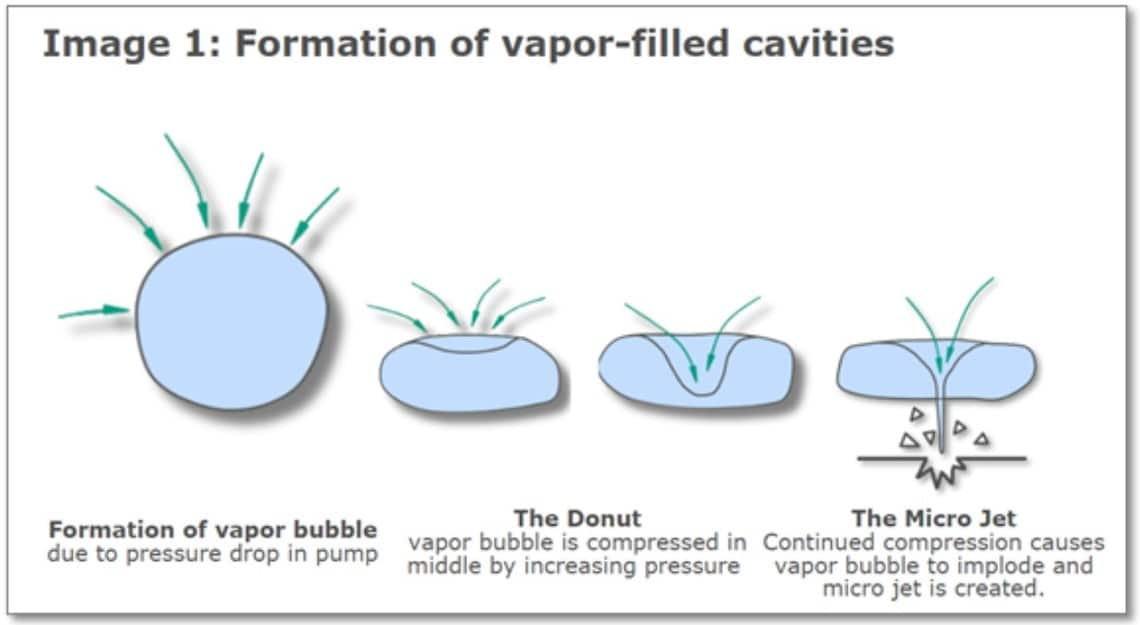
Cavitation in pumps
Under the right conditions, cavitation begins in the pump where the pressure is the lowest, at the eye of the impeller. As water flows through the eye of the impeller, it accelerates, resulting in a pressure drop (Image 2). If the pressure falls below the vapor pressure of water, the boiling point is reduced, causing the water to transform into a vapor state, forming bubbles (Image 3).

These vapor-filled bubbles are carried by the flowing water through the impeller toward the discharge point, where they encounter higher pressures. The increase in pressure causes the bubble to implode or collapse violently back into liquid form. If these collapses occur close to a surface such as the guide vane, damage can occur (Image 4).
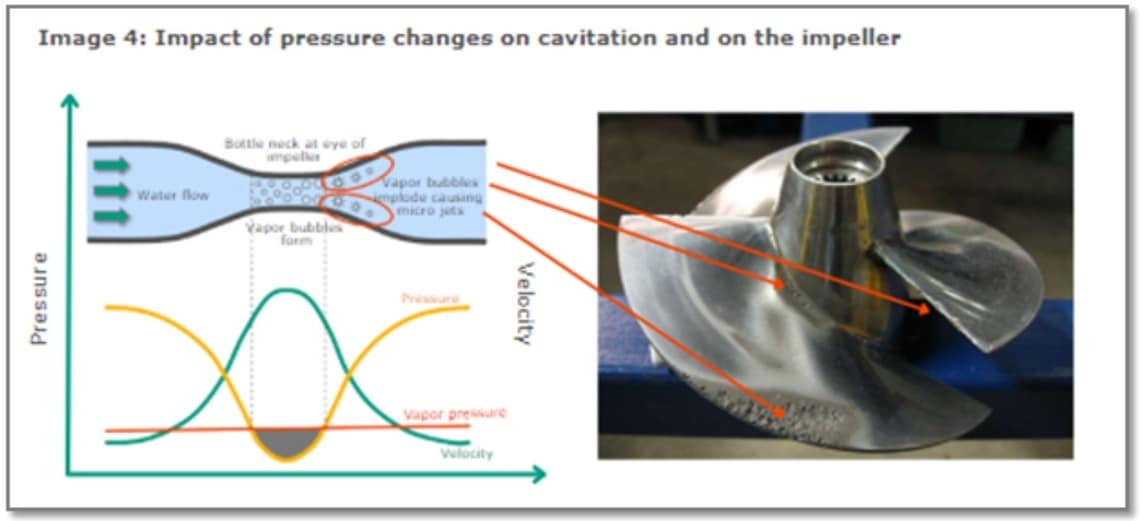
In the 3D model view below (Image 5), you can see how the suction passage directs flow into the eye of the impeller, where it gains velocity as it moves through the impeller and is then discharged. Pressure is the lowest at the eye of the impeller and gradually increases as it moves through the vanes. However, if the pressure at the eye of the impeller drops below the liquid’s vapor pressure, vapor bubbles form and collapse at the high-pressure tip of the guide vane.
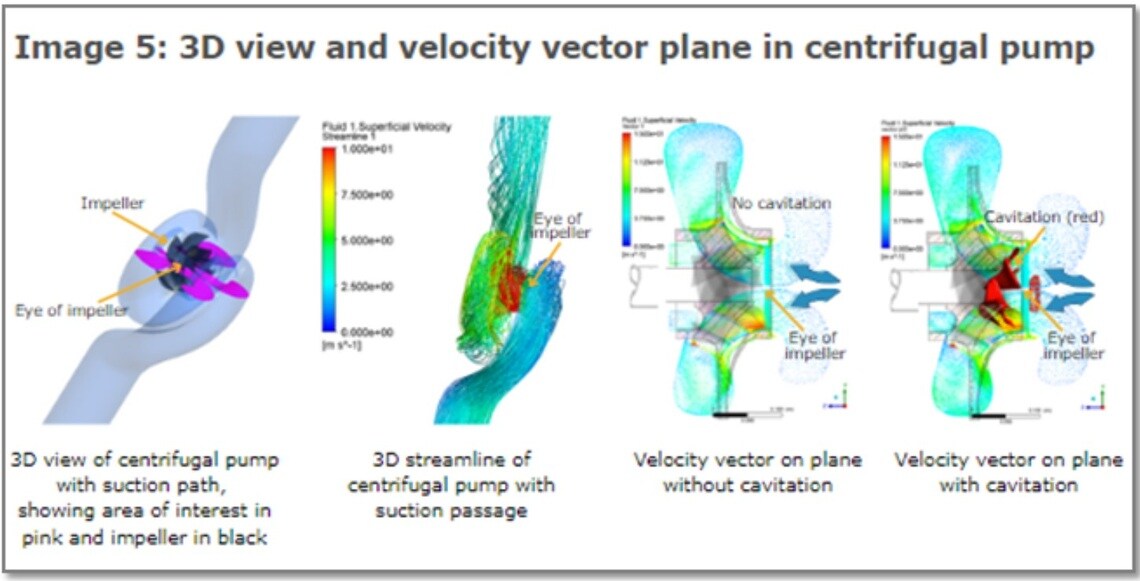
Causes of cavitation in centrifugal pumps
Cavitation is a leading cause of pump failure. Since cavitation can result from excessively low pressure at the pump inlet, it can be prevented by ensuring the pressure at the suction end of the pump remains sufficiently above the liquid’s vapor pressure.
Factors leading to low inlet pressure:
- Low suction pressure: Causes include high suction lift, poor piping design, closed/partially closed valves, or clogged filters/strainers.
- Net Positive Suction Head (NPSH): Cavitation occurs if the available NPSH (NPSHA) is less than the required NPSH (NPSHR).
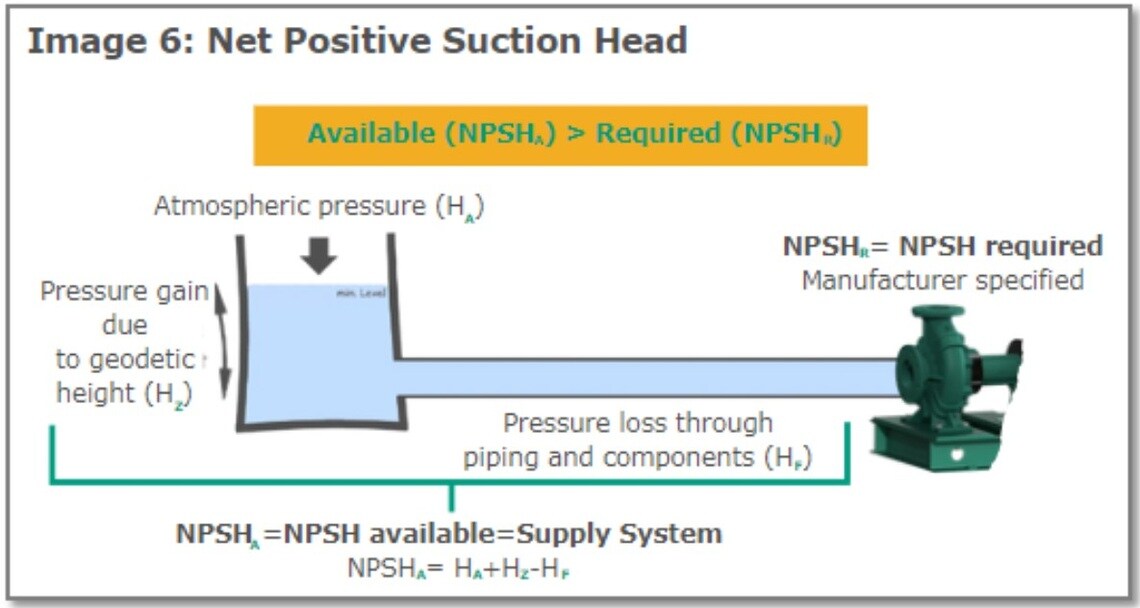
- Operating away from Best Efficiency Point (BEP): Running the pump at a higher flow rate increases NPSHR, potentially exceed NPSHA (Image 7).
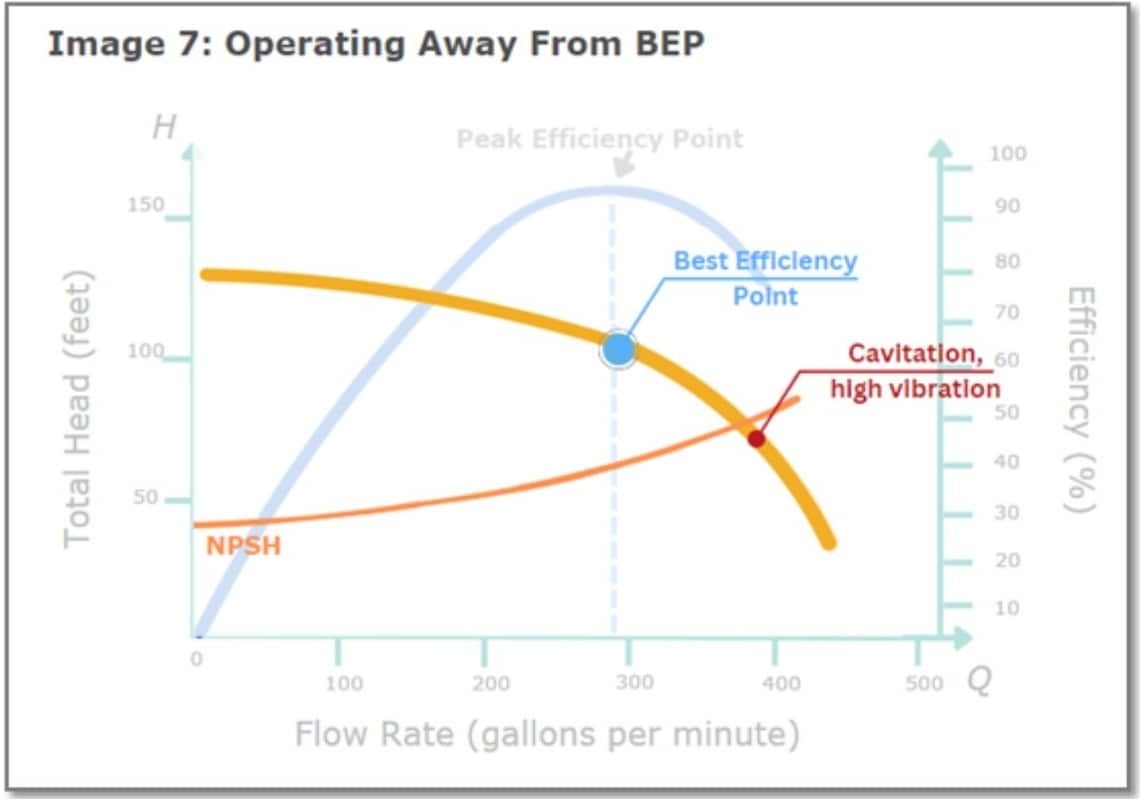
- High fluid velocity: Excessive velocity lowers fluid pressure, often due to overspeed operation.
- Flow path disruptions: Sharp bends or sudden expansions or contractions in the water’s flow path can drop pressure drops below the water’s vapor pressure.
- High temperatures: Elevated fluid temperatures raise vapor pressure, increasing cavitation risk
Signs of cavitation
The implosion of vapor-filled bubbles creates hydraulic imbalances within the impeller, resulting in decreased pump performance and efficiency and increased risk for pump failure. The following signs may indicate cavitation in pumps:
- Unusual noise: Rumbling, cracking, or popping sounds caused by vapor bubble implosions.
- Vibration: Increased vibration indicating unstable pump operation.
- Reduced performance: Lower efficiency and output due to disrupted fluid flow.
- Physical damage: Visible pitting or erosion on the impeller and casing.
- Fluctuating pressure: Irregular pressure readings from unstable flow conditions.
- Erratic power consumption: Inconsistent power use from disrupted pump performance.
- Frequent maintenance: More frequent repairs due to premature wear on components.
Measures to prevent cavitation
To ensure reliable performance and longevity in centrifugal pumps, it is crucial to implement effective prevention strategies. To prevent cavitation in pumps, consider the following design practices:
- Adequate suction pressure: Ensure pump inlet pressure stays above the fluid’s vapor pressure.
- Properly size the pump: Select the right pump size for the application.
- Minimize suction lift: Position the water source at same level or above the pump to minimize suction lift.
- Increase NPSHA: Ensure NPSHA exceeds NPSHR by lowering the pump, reducing suction line friction, or raising the fluid level in the supply tank.
- Optimize piping design: Use straight, short suction piping with minimal bends and larger diameter s tore duce velocity and pressure drops.
- Operate near BEP: Operate the pump close to its BEP for stable flow.
- Control fluid velocity: Keep fluid velocity within recommended limits.
- Prevent blockages: Keep filters, strainers, and valves clean and fully open.
- Consider an inducer: Install an inducer if needed to booster inlet pressure.
Conclusion
Cavitation is a leading cause of pump failure, impacting efficiency, reliability, and longevity. Recognizing the signs and understanding the causes are essential steps in preventing damage and maintaining the optimal performance of centrifugal pumps. Regular monitoring, proper pump sizing, and maintaining adequate NPSH are crucial for minimizing cavitation risks.
Wilo is Your Solutions Provider
People and customers are always the center of focus at Wilo USA. When it comes to our promise of quality products, there is no difference. Wilo offers expertise in diagnosing, preventing, and mitigating cavitation in pumps. By providing high-quality solutions and support, Wilo ensures your pumps operate efficiently, reliably, and for longer periods.